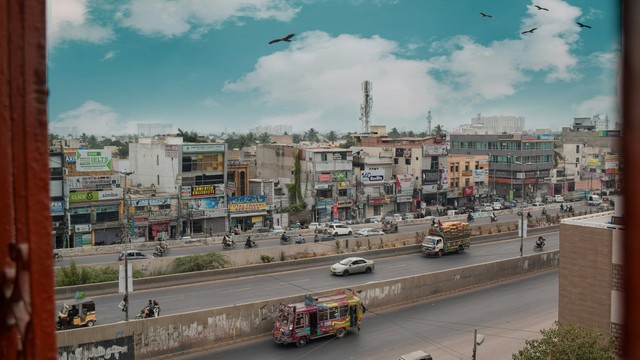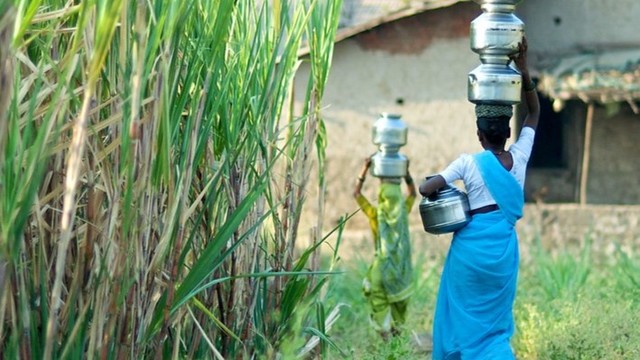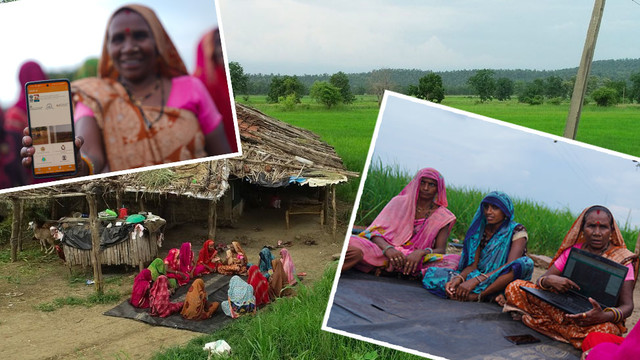Data that supports local development
Global goals and targets often rely on national data, but local data are needed to inform action on the ground and to monitor progress on the goals.


Dharavi slum, Mumbai: data about people living in informal settlements provides valuable information for discussions with local authorities (Photo: Akshay Mahajan, Creative Commons via Flickr)
Progress on all the goals and targets set by the Sustainable Development Goals (SDGs) and the Paris Agreement, as well as the new goals drafted for Habitat III all need to be monitored. But to be effective, this needs data collected at the local level to guide local action on the goals and ensure local accountability as well as contributing to (local and national) monitoring.
Aggregate v disaggregate
Most statistics used to assess or measure development are national. Whether economic (per capita GDP), social (life expectancy at birth, infant mortality, provision for water and sanitation) or environmental (greenhouse gas emissions per person).
Most of the Millennium Development Goals and the SDGs focus on national goals and so are assessed by national statistics. Some national statistics are available for urban and rural areas but rarely for individual cities, let alone for wards or districts within cities.
National statistics are often aggregated to give statistics for each region (for instance for sub-Saharan Africa) or for groups of countries (least developed countries). These aggregate statistics can be used to try to motivate action – for instance the 880 million urban dwellers recorded as without water piped to their premises in 2015 should be a spur to more investment and action.
Local statistics needed
This national focus leaves a gap. Statistics are needed to highlight local needs and to guide local action. Most of the responsibilities for meeting the SDGs (and the Paris Agreement) in urban areas fall to local governments.
It does not serve them to know the national or even the urban average for the proportion of the population with unmet SDG goals. They need to know which district, which ward and preferably which street needs action and investment.
So many of the SDGs need to be addressed and monitored by urban governments and the data needs to be available for each urban centre and for the smaller units (e.g. wards) that make up the urban centre.
For instance, the laudable attempts to get data on issues as diverse as access to parks or other forms of public space or distances to a bus or rail station produce little basis for action if these are national statistics. They are needed down to the ward and sub-ward level.
Focusing on local data to inform local action and assess local performance is obviously useful for local government – but just as importantly, it is useful for community organisations and for federations formed by those whose SDG goals are not met.
Indeed, there are now so many examples of such organisations and federations collecting the local data needed to catalyse and inform local action (see www.sdinet.org). Much of this action needs changes at the lowest levels of local government – for instance, in Indian cities, at ward and sub ward level.
People living in informal settlements (often termed 'slums') have been actively engaged in collecting data since the 1970s. One example was when the inhabitants of Janata colony in Mumbai collected data about all the households, enterprises and infrastructure in their settlement as they fought the government's intention to evict them.
The data showed that they were not illegal settlers and in fact had infrastructure and services provided by the state. This helped delay the eviction but in the end, did not stop it, although the negotiations led to relocation rather than eviction.
The data showed that they were not illegal settlers and in fact had infrastructure and services provided by the state
A census of pavement dwellers in Mumbai in 1986 showed how they were not newly-arrived unemployed migrants (as the government assumed) but people who had jobs (although very poorly paid), who had long lived in the city and who walked to work because they could not afford transport.
During the 1990s, more and more national federations of slum/shack dwellers formed and learnt how to collect local data about the people living in informal settlements (who generally are not included in official data gathering). This provided the inhabitants with the information to discuss their needs and priorities in each locality and helped local government fill the large gaps in local data.
This often led to better relations with local government that developed into working partnerships to improve conditions.
In Africa, this work was supported by the "Know your city" campaign that has encouraged and supported slum/shack dweller federations to undertake surveys of all informal settlements in more than 600 cities.
Recognising what matters
Most of those who promote the SDG goals and targets do not understand the importance of this local data, produced by the residents or co-produced with local government.
But if you consider all the needs and priorities of those living in informal settlements, so much of what they need depends on local government – for instance connecting pipes to their homes to bring regular, good quality water supplies, connections to sewers and electricity, and regular collection of household wastes – or maintenance of community toilets. Or better maintenance of public housing and open spaces.
Or developing a local police system that listens to and serves them and that they can work with, such as the community policing set up in many informal settlements in Mumbai. Or getting local bureaucracies to ensure their access to ration cards allowing them access to subsidised food and fuel (people in informal settlements often struggle to get the documentation to get these).
In India, the National Slum Dwellers Federation and Mahila Milan (the federation of women's savings groups) use the data they collect on informal settlements in Mumbai to prepare detailed slum profiles for each ward and sub ward – because they know how much the lowest level of local government and local politicians can hinder or help support the local processes by which improvements are made and needs are addressed. And these levels of government need local information if they are to act.
Sheela Patel (sparcssns@gmail.com) is the founder and director of the Society for the Promotion of Area Resource Centers (SPARC) India, which is based in Mumbai, and works in partnership with the National Slum Dweller Federation and Mahila Milan. She is also chair of Shack/Slum Dwellers International (SDI).



